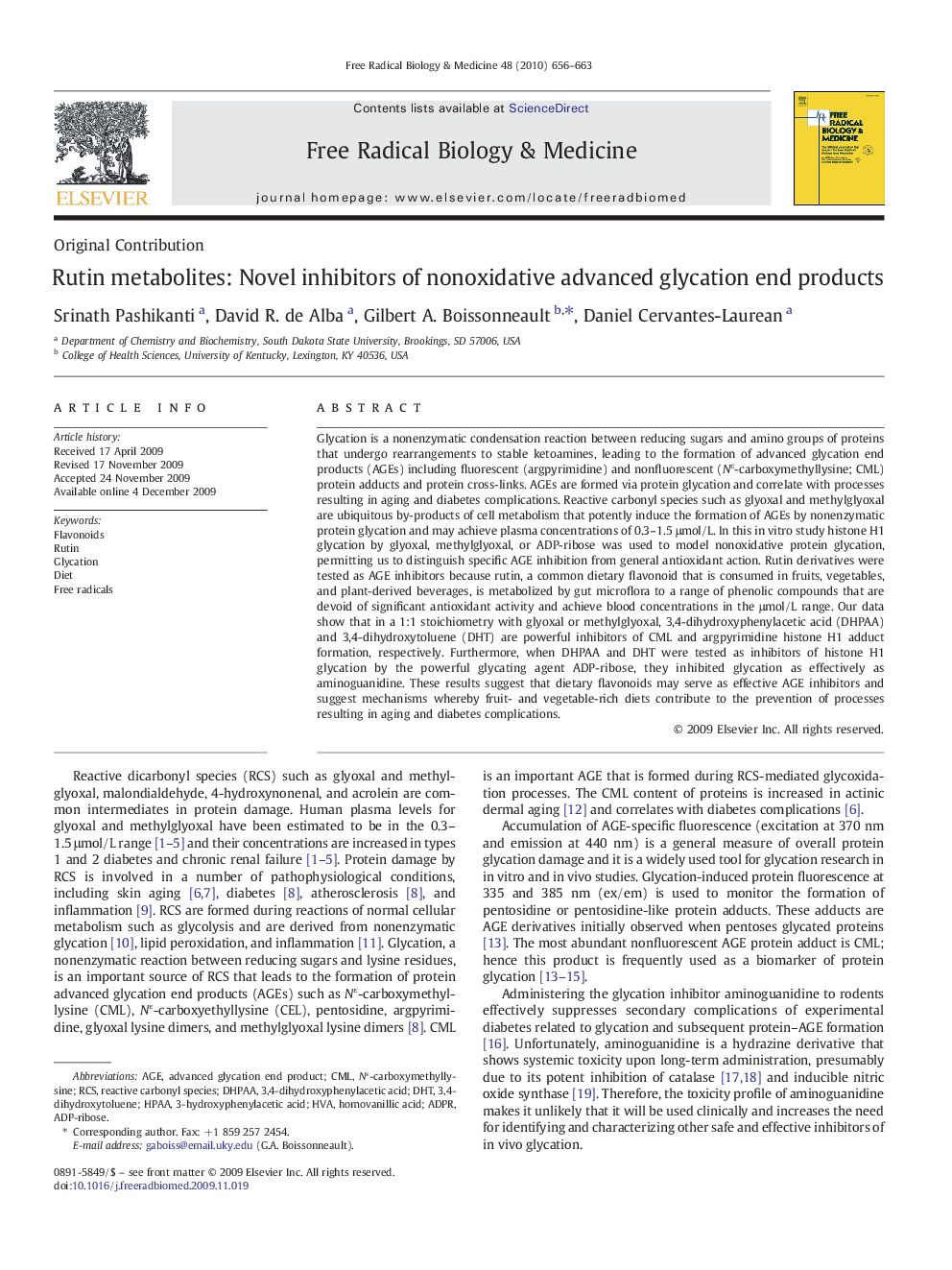| کد مقاله | کد نشریه | سال انتشار | مقاله انگلیسی | نسخه تمام متن |
|---|---|---|---|---|
| 1910007 | 1046747 | 2010 | 8 صفحه PDF | دانلود رایگان |

Glycation is a nonenzymatic condensation reaction between reducing sugars and amino groups of proteins that undergo rearrangements to stable ketoamines, leading to the formation of advanced glycation end products (AGEs) including fluorescent (argpyrimidine) and nonfluorescent (Nε-carboxymethyllysine; CML) protein adducts and protein cross-links. AGEs are formed via protein glycation and correlate with processes resulting in aging and diabetes complications. Reactive carbonyl species such as glyoxal and methylglyoxal are ubiquitous by-products of cell metabolism that potently induce the formation of AGEs by nonenzymatic protein glycation and may achieve plasma concentrations of 0.3–1.5 μmol/L. In this in vitro study histone H1 glycation by glyoxal, methylglyoxal, or ADP-ribose was used to model nonoxidative protein glycation, permitting us to distinguish specific AGE inhibition from general antioxidant action. Rutin derivatives were tested as AGE inhibitors because rutin, a common dietary flavonoid that is consumed in fruits, vegetables, and plant-derived beverages, is metabolized by gut microflora to a range of phenolic compounds that are devoid of significant antioxidant activity and achieve blood concentrations in the μmol/L range. Our data show that in a 1:1 stoichiometry with glyoxal or methylglyoxal, 3,4-dihydroxyphenylacetic acid (DHPAA) and 3,4-dihydroxytoluene (DHT) are powerful inhibitors of CML and argpyrimidine histone H1 adduct formation, respectively. Furthermore, when DHPAA and DHT were tested as inhibitors of histone H1 glycation by the powerful glycating agent ADP-ribose, they inhibited glycation as effectively as aminoguanidine. These results suggest that dietary flavonoids may serve as effective AGE inhibitors and suggest mechanisms whereby fruit- and vegetable-rich diets contribute to the prevention of processes resulting in aging and diabetes complications.
Journal: Free Radical Biology and Medicine - Volume 48, Issue 5, 1 March 2010, Pages 656–663